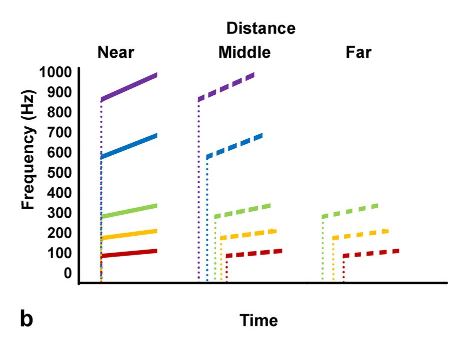The agricultural pest, Homalodisca vitripennis, relies on vibrational communication through plants for species identification, location, and courtship. Their vibrational signal exhibits a dominant frequency between 80 and 120 Hz, with higher frequency, lower intensity harmonics occurring approximately every 100 Hz. However, previous research revealed that not all harmonics are recorded in every signal. Therefore, how the female H. vitripennis vibrational signal changes as it travels through the plant was investigated. Results confirmed that transmission was a bending wave, with decreased signal intensity for increasing distance from the source; moreover, at distances of 50 cm, higher frequencies traveled faster than lower frequencies, suggesting that dispersion of H. vitripennis signal components may enable signaling partners to encode distance. Finally, H. vitripennis generates no detectable airborne signal (pressure wave), yet their low vibrational frequency components are detectable in neighboring plants as a result of leaf-to-air-to-leaf propagation. For instance, with isolated key female signal frequencies, 100 Hz was detected at a 10 cm gap between leaves, whereas 600 Hz was detectable only with a 0.1 cm gap. Together, these results highlight the complexity of vibration propagation in plants and suggest the possibility of the animals using the harmonic content to determine distance to the signaling H. vitripennis source.


Recent Comments